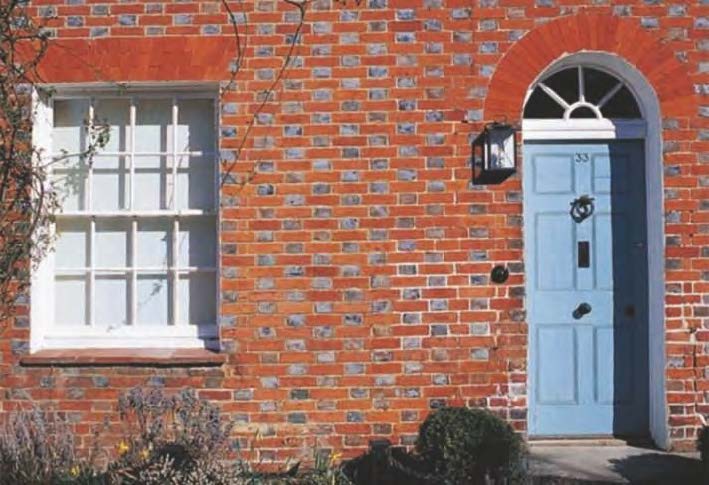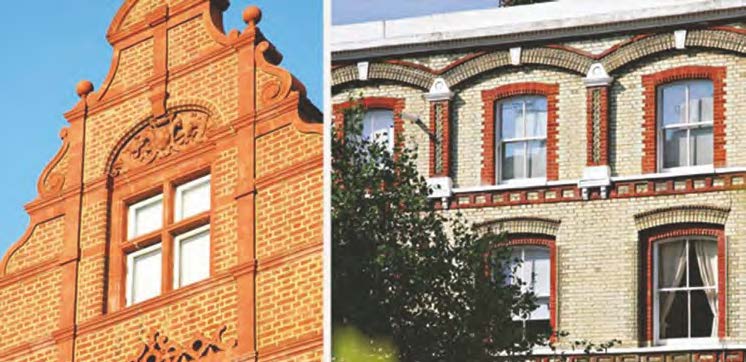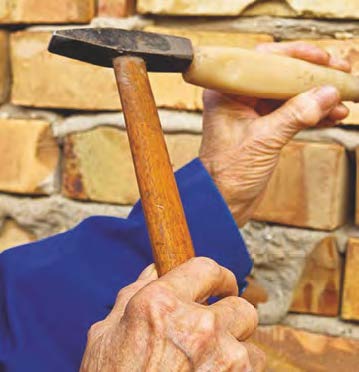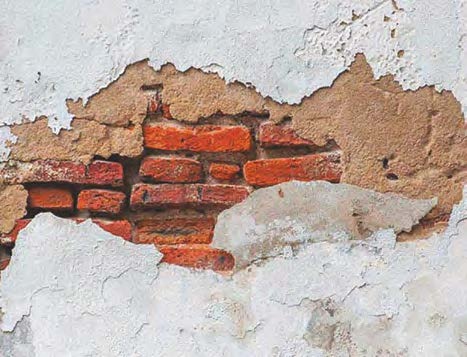Another Brick in the Wall
Brick can be one of the most durable building materials. Not infrequently, however, poor repairs, a lack of maintenance and inappropriate alterations lead to trouble.
For centuries Britain lagged behind Europe in brick-making. Techniques came from Flanders, Holland and Northern Germany where there was no stone for building.
Some of the finest British historic brickwork is demonstrated in 15th-century chimney building, first in larger buildings but later in simpler vernacular buildings too. Timber and plaster fire hoods and smoke bays, which caught fire very easily, were replaced by purpose-built chimney breasts and stacks in brick or stone. Early examples were often added as external projections. In areas where good building stone was plentiful, brick was often preferred for chimneys for its ability to resist heat.

By the 16th century, brick was fast becoming an important building material. The advantages were obvious: bricks could be made near the site, clay being readily available; and as they were made in moulds they came in a variety of convenient sizes, and they were warmer than traditional stone.
Regulations to control brick sizes were introduced during the 18th and 19th centuries, but the big changes came with an improvement in quality in late Georgian times, perhaps as a result of canal building and the need for stronger bricks for engineering work.
Builders fully exploited the decorative possibilities and began laying bricks in patterns of contrasting colours, and combining them with other materials such as flint.
The most common bond was English bond which alternated headers and stretchers. The Flemish bond became popular in the 18th century.

Originally, bricks came in a variety of colours – the colour being a product of the clay used and the amount of air allowed into the clamp or kiln during firing. However, when brick-making became mechanised at the end of the 19th century, the subtle variations of handmade bricks were lost.
Brickwork problems
 Before considering the most appropriate method of repairing brickwork, correct diagnosis of the cause of failure is vital.
Before considering the most appropriate method of repairing brickwork, correct diagnosis of the cause of failure is vital.
Problems with brickwork can be categorised as:
- inherent defects such as inadequate firing, poor design or bad craftsmanship
- ageing defects such as weathering and settlement
- maintenance defects such as open joints, plant growth in masonry and saturation from leaking gutters.
Water plays a significant part in many of the most common problems found in brick walls.
Movement can cause cracking in brickwork or cause it to bulge. This can be due to differential settlement and changes in the load-bearing soil, or the application of excessive external forces such as wind.
Remedial work to historic brickwork must be carefully selected after expert analysis and should always be kept to an absolute minimum.
If it becomes necessary to replace bricks, great care is needed not to cause damage to existing undamaged bricks in the process. The choice of repair method will depend on how easily the damaged bricks can be re-used, which in turn depends on the bond type and the strength of mortar used.
Replacement bricks should match the existing as closely as possible. This can sometimes prove difficult, as some historic bricks are often of irregular size and shape. Mismatched bricks can appear unattractive and cause problems to fit into existing bond. There are, however, a number of brick specialists in the UK who produce handmade bricks to measure.
Mortar mixes and lime
Any re-pointing should be carried out with an appropriate mortar. As a general rule, any building pre-1850 will need a lime-based mortar. Lime mortar consists of lime, sand and water. The exact proportions of the mix, the colour and character of its ingredients and very thorough mixing are all extremely important.
Painting brickwork
Painting or rendering over facing brickwork may seem an attractive proposition due to its relative cheapness. However, it is actually likely to cause more problems in the long term as it tends to trap excessive moisture within the wall. Listed Building Consent will be required for painting or rendering of facing brickwork on a Listed Building. In some circumstances, it may be required for repointing or replacing bricks.
Cleaning brickwork or removing paint/render
 When considering cleaning historic brickwork, it is important to be gentle. Over-abrasive methods such as sand-blasting or high-pressure water jets can damage the surface of the brick. The same applies to chemical cleaners, which are just too strong for old brickwork. Any chemical applications are best undertaken by a specialist conservation contractor.
When considering cleaning historic brickwork, it is important to be gentle. Over-abrasive methods such as sand-blasting or high-pressure water jets can damage the surface of the brick. The same applies to chemical cleaners, which are just too strong for old brickwork. Any chemical applications are best undertaken by a specialist conservation contractor.
Brickwork that is in good condition does not need painting, rendering or any other form of weatherproofing. However, there are many examples of once attractive buildings hidden beneath layers of paint which is expensive to remove.
Because our comfort and security directly depend on these frontline defences resisting the perpetual onslaught of the elements, any sign of failure or deterioration should not be ignored. As with all repair and maintenance work to Listed Buildings, we strongly recommend seeking professional advice.
Posted in: Property
